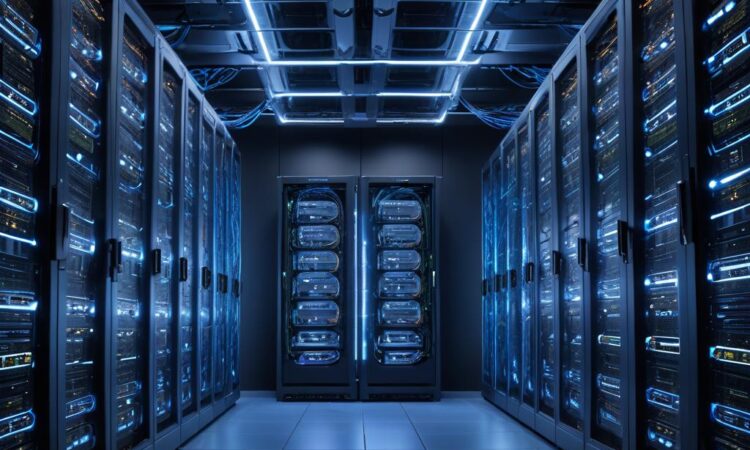Hardware Innovation in Edge Computing
With the growing demand for low-latency and data privacy, there’s a surge in hardware innovation for edge computing. Companies are developing specialized chips and devices optimized for specific tasks, such as AI inference and data processing at the edge, contributing to a decentralized and more efficient computing ecosystem.
The Rise of Edge Computing
Edge computing is a paradigm shift in how data is processed and managed. Instead of relying solely on centralized data centers, edge computing brings computation closer to the source of data, enabling faster response times, reduced latency, and enhanced data privacy. This paradigm is particularly crucial for applications that require real-time data analysis, such as autonomous vehicles, industrial automation, and Internet of Things (IoT) deployments.
Hardware Innovation for Edge Applications
The shift towards edge computing has fueled a wave of hardware innovation. Companies are focusing on developing specialized chips and devices tailored for specific edge computing tasks. These advancements are crucial for meeting the unique requirements of different edge applications, ensuring optimal performance and efficiency.
1. Specialized Processors for AI Inference
Artificial intelligence (AI) is transforming numerous industries, and edge AI applications are becoming increasingly prevalent. To execute AI algorithms efficiently at the edge, companies are developing specialized processors, often based on neural processing units (NPUs) or graphics processing units (GPUs), optimized for AI inference. These processors excel at performing complex mathematical operations, enabling real-time AI analysis and decision-making at the edge.
2. Low-Power Microcontrollers for IoT Devices
The Internet of Things (IoT) connects billions of devices, generating a massive volume of data. To power these devices effectively, low-power microcontrollers are essential. These microcontrollers are designed for energy efficiency, enabling long battery life for IoT devices deployed in remote or challenging environments. They can handle basic data processing and communication tasks, enabling data collection and analysis at the edge.
3. High-Performance Networking for Data Transmission
Data transmission is a critical aspect of edge computing, as data needs to be moved between devices and to the cloud for further processing. Companies are developing high-performance networking solutions, such as 5G and Wi-Fi 6, to facilitate fast and reliable data transfer at the edge. These technologies enhance data throughput and reduce latency, ensuring seamless communication between edge devices and the cloud.
Benefits of Hardware Innovation in Edge Computing
The hardware innovations driving edge computing offer numerous benefits for businesses and individuals:
1. Reduced Latency and Improved Response Times
By processing data closer to its source, edge computing reduces the distance data travels, leading to significantly lower latency. This improved responsiveness is critical for real-time applications, such as autonomous driving, where milliseconds can make a difference.
2. Enhanced Data Privacy and Security
Edge computing allows for data processing and analysis locally, minimizing the need to transmit sensitive data to centralized servers. This enhanced data privacy is crucial for applications handling personally identifiable information or critical infrastructure data.
3. Increased Scalability and Flexibility
Edge computing enables distributed processing, allowing for scalability and flexibility. Businesses can easily add or remove edge devices based on their changing needs, adapting their infrastructure to handle fluctuating workloads.
4. Reduced Bandwidth Requirements
By processing data locally, edge computing reduces the amount of data that needs to be transmitted to the cloud, minimizing bandwidth requirements. This is particularly beneficial for applications with limited network connectivity or high data volume.
Challenges and Future Directions
While edge computing holds immense promise, it faces some challenges that need to be addressed:
1. Standardization and Interoperability
The lack of standardized protocols and interoperability between different edge devices and platforms can hinder deployment and integration. Establishing industry standards is crucial for ensuring seamless connectivity and data exchange.
2. Security and Management
Securing edge devices and ensuring proper management are essential for preventing data breaches and ensuring system reliability. Robust security measures and centralized management solutions are needed to address these concerns.
3. Power Consumption and Heat Dissipation
Edge devices often operate in challenging environments with limited power access. Optimizing power consumption and heat dissipation is crucial for ensuring device longevity and reliability.
4. Cost and Complexity
Deploying and maintaining edge computing infrastructure can be costly, requiring significant capital investment and technical expertise. Finding cost-effective solutions and simplifying the deployment process is essential for widespread adoption.
Conclusion
Hardware innovation is driving the rapid evolution of edge computing, enabling a more decentralized and efficient computing ecosystem. Specialized chips and devices optimized for edge applications are enabling faster response times, enhanced data privacy, and increased scalability. As edge computing continues to mature, further hardware advancements are expected, addressing the challenges and unlocking new opportunities for businesses and individuals.

